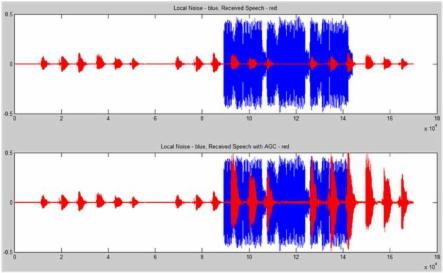Transmit Audio Algorithms
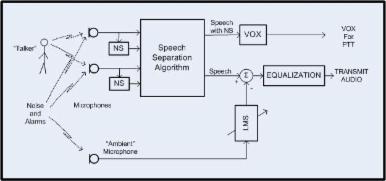
The above diagram shows one possible arrangement of some of Broad Audio's audio signal processing algorithms for transmitted speech. Noise suppression ( NS ) is used to attenuate stationary noise sources while Broad Audio's speech separation algorithm extracts the speech from non-desired sounds. Optionally, an ambient noise source can be linearly subtracted from the speech using a least means squared ( LMS ) algorithm, the presence of speech can be detected using Broad Audio's voice activated switch ( VOX ) algorithm, and the acoustics of the microphone and housing can be equalized to provide a flat frequency response.
The following two figures reflect the performance of Broad Audio's transmit algorithms for the case of speech in the presence of a multi-tone alarm (first figure) and a stationary noise source (second figure). In these figures, the top two plots are of the captured audio using an omni-directional microphone (top plot) and a close talking microphone (middle plot). The algorithm output (bottom plot) shows the "clean" speech and the voice activity detection (VOX) (red line). The resulting speech is clearly separated from the sources of noise and the VOX clearly detects the complete words including low level sounds at the start and end of the words.
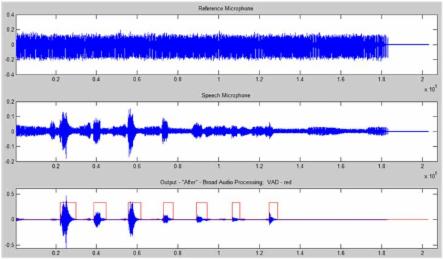
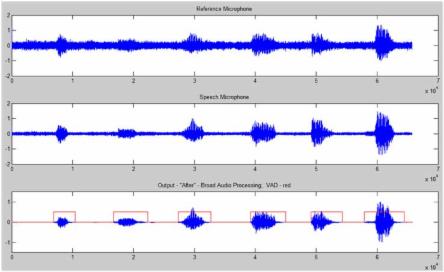
Receive Audio Algorithms
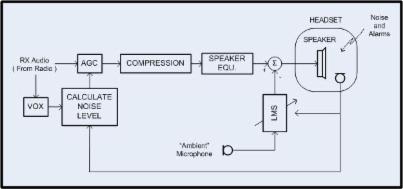
The above diagram shows one possible arrangement of some of Broad Audio's audio signal processing algorithms for received speech. Automatic gain control ( AGC ) is used to bring the received audio's level to be comparable to the level of noise in the user's environment, such that the received audio can be heard over the environmental noise. Compression is used to increase the gain of low level sounds, while speaker equalization is used to compensate for the speaker's frequency response. Additionally, active noise cancellation ( using an LMS algorithm ) can be used to decrease the noise level in the headset.
The following figure shows how Broad Audio's automatic gain control ( AGC ) increases the received speech ( red in figure ) gain when a local noise ( blue in figure ) is present. The top plot shows the non-AGC levels of the received speech and noise. The bottom plot shows the increased level of the speech during the noise, such that the user can hear the speech over the local noise. The gain gradually decreases to the initial level after the noise goes away.
![]()
